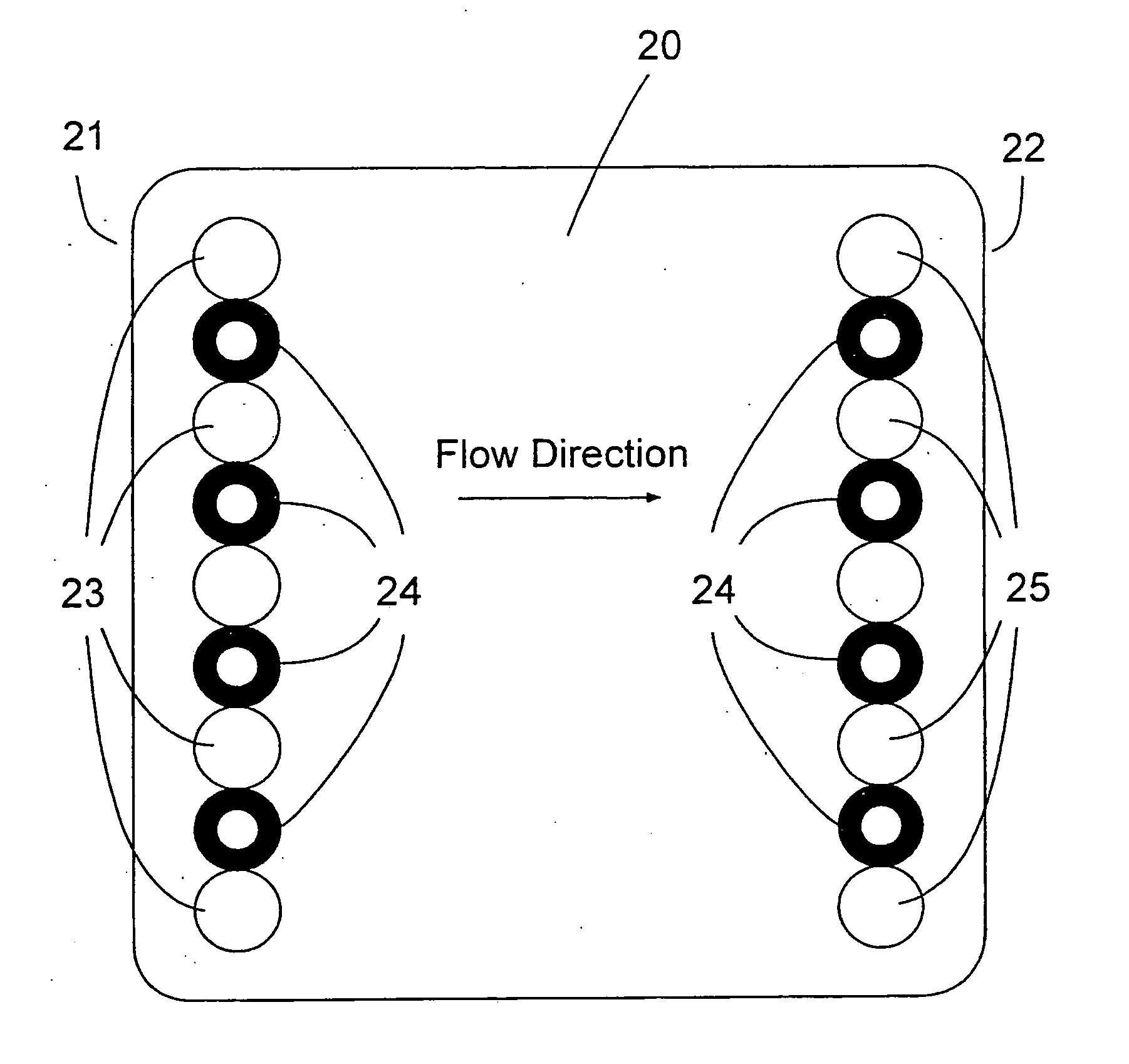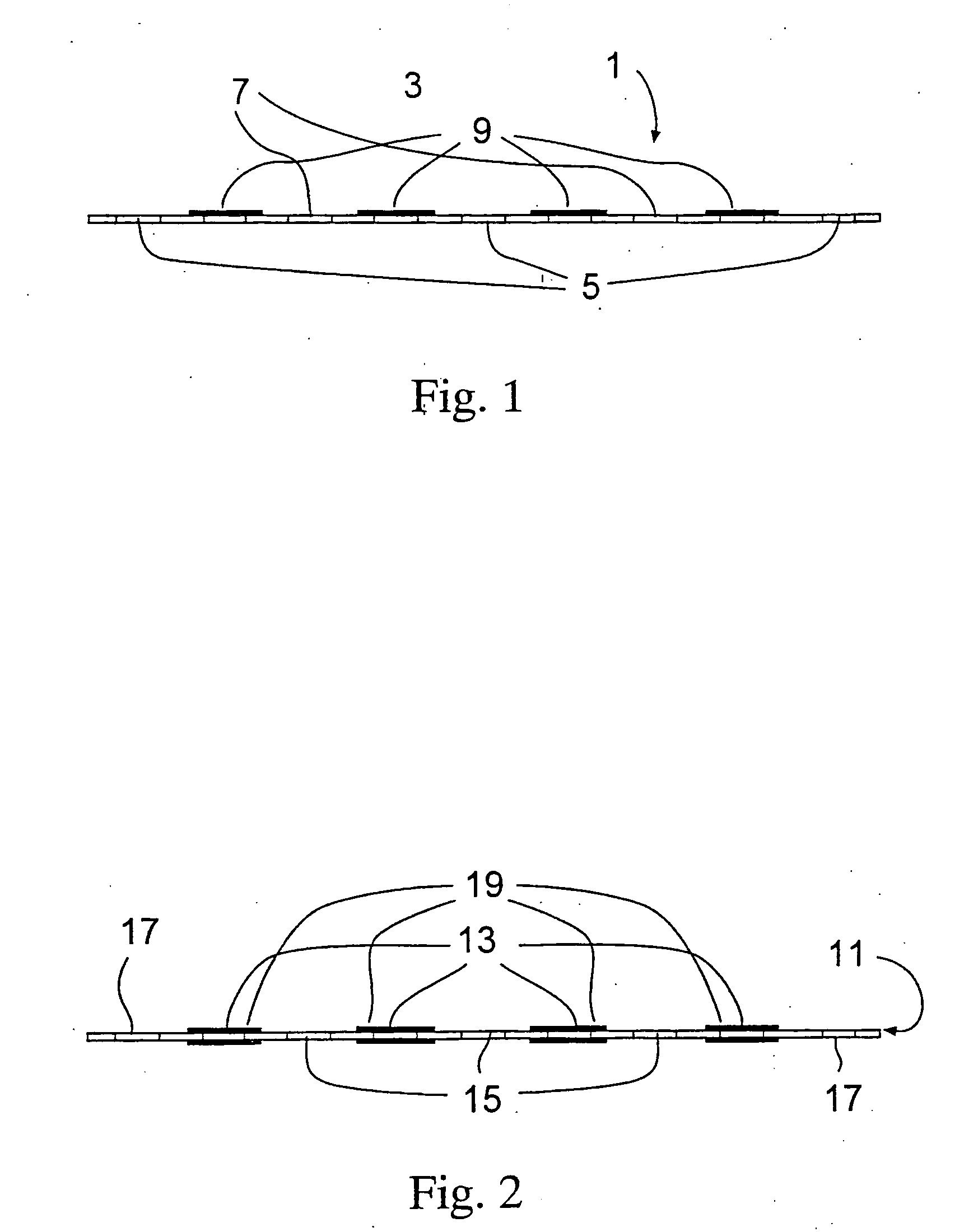Sealing device for filtration devices
a technology of sealing device and filtration device, which is applied in the direction of membranes, filtration separation, separation process, etc., can solve the problems of insufficient seal type, leakage, and expensive equipment, and achieves the effect of reducing the risk of leakage, avoiding leakage, and avoiding leakag
- Summary
- Abstract
- Description
- Claims
- Application Information
AI Technical Summary
Benefits of technology
Problems solved by technology
Method used
Image
Examples
example 1
[0064] A TFF module was made with a feed screen having an injection molded thermoplastic elastomeric gasket made from Santoprene® 80 durometer elastomer and 0.005 inch in height from each side of the screen. One layer of a composite regenerated cellulose membrane, PL composite, a relatively easily compressible membrane available from Millipore Corporation, was used in the module.
[0065] A comparison module, known as a PELLICON® Maxi cassette, available from Millipore Corporation of Bedford, Mass. was constructed similarly to the one above, except that the feed screen seal of standard epoxy was used. This seal was flush with the surface of the screen.
[0066] Both were tested in a PELLICON® SS benchtop manifold, available from Millipore Corporation of Bedford, Mass. at 350 inlbs torque. Each was exposed to a series of 5 alternating cold / hot cycles using water as the fluid. The hot cycle was at a feed pressure of 60 psi and then a retentate pressure of 35 psi at 50° C. for two hours. T...
PUM
| Property | Measurement | Unit |
|---|---|---|
| pressure | aaaaa | aaaaa |
| height | aaaaa | aaaaa |
| pressure | aaaaa | aaaaa |
Abstract
Description
Claims
Application Information
 Login to View More
Login to View More - R&D
- Intellectual Property
- Life Sciences
- Materials
- Tech Scout
- Unparalleled Data Quality
- Higher Quality Content
- 60% Fewer Hallucinations
Browse by: Latest US Patents, China's latest patents, Technical Efficacy Thesaurus, Application Domain, Technology Topic, Popular Technical Reports.
© 2025 PatSnap. All rights reserved.Legal|Privacy policy|Modern Slavery Act Transparency Statement|Sitemap|About US| Contact US: help@patsnap.com



